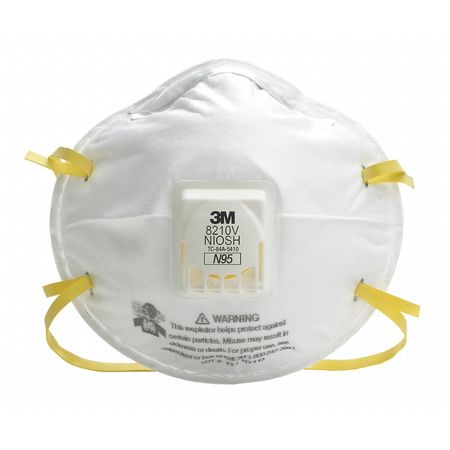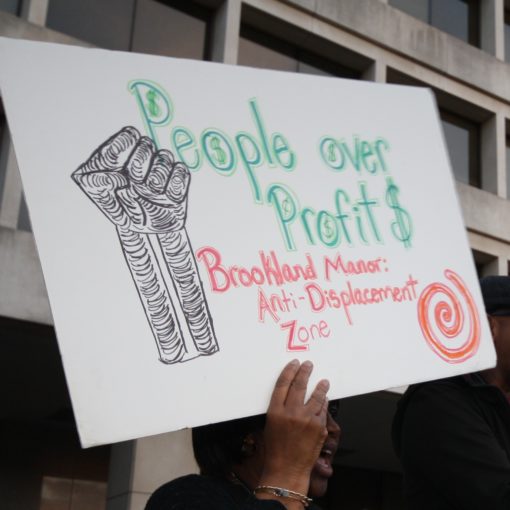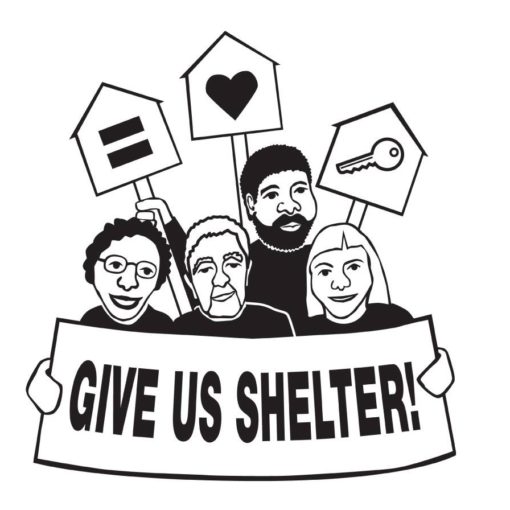Clean This Place, Don’t Displace
A case study on the urgent need for binding impact assessments
Buzzard Point, a predominantly African American neighborhood that had long suffered the effects of industrial toxicity, has become a shining example of how publicly-oriented development can right past wrongs. Once DC’s equivalent of Flint, Michigan, Buzzard Point residents now breathe easily thanks to a comprehensive effort to clean up pollution that was at the core of large-scale redevelopment in the area.
The city enforces health protective zero-tolerance regulations on pollution and electromagnetic radiation, ensuring that the success of nearby production centers for Superior Concrete, Vulcan Materials, and Pepco no longer come at residents’ expense. A new health clinic, funded by developers and specializing in the treatment of cancer and chronic respiratory disease, helps residents grapple with the residual effects of decades spent breathing in toxic chemicals.
When the city considered a series of massive development projects in Buzzard Point in 2014—including the construction of Audi Field, a new Pepco substation, and a new bridge across the river—it conducted a comprehensive impact assessment. The Department of Healthidentified significant health and environmental consequences of unearthing tons of toxic soil and thousands of pests in an already-vulnerable community. In collaboration with residentsrallying behind the slogan “Clean this Place, Don’t Displace”, the city proactively developed and rigorously enforced prevention and control measures to control dust and improve air quality. During the redevelopment, regularly scheduled public meetings allowed the city to rapidly identify and address health issues that arose from the intensive construction. As part of its commitment to social determinants of health, the city passed sweeping protections for affordable housing to mitigate against the displacement that typically follows large-scale redevelopment deals.
The inclusion of binding impact assessments in all development projects means that it is no longer possible for developers to profit while DC residents to sicken and die as they try to hold onto their homes. Buzzard Point residents—finally—can enjoy safe and stable housing, clean air, and adequate access to health care. This is the covenant of government—to protect the health and well being of its citizens.
Yet this is not how the redevelopment of Buzzard Point played out.
 In fact, the city approved the redevelopment over the strenuous objections of residents and without environmental or health protections in place. The city ignored recommendations from the 2016 Community Health and Safety Report produced by the city’s own Department of Health to protect the safety and resilience of Buzzard Point residents during the intense redevelopment.
In fact, the city approved the redevelopment over the strenuous objections of residents and without environmental or health protections in place. The city ignored recommendations from the 2016 Community Health and Safety Report produced by the city’s own Department of Health to protect the safety and resilience of Buzzard Point residents during the intense redevelopment.
The city refused residents’ requests for 1) a health advocate to represent the community’s interests to the different entities causing damage, 2) the cement factory to be continuously hosed down to reduce dust, and 3) the installation of blacktop to limit airborne pollutants.
The city reapproved Superior Concrete’s permit to pollute in January 2018. The only health clinic in Southwest closed down in 2017. Residents still suffer significantly higher rates of cancer and respiratory disease linked to poor air quality and radiation. The rate of pediatric asthma is 50% higher in Buzzard Point than in the rest of Southwest.
Chronic Obstructive Pulmonary Disease (COPD) is 10x more prevalent amongst adults than in surrounding neighborhoods. And city residents, suffering the effects now, wonder if they will still be in their homes when the dust settles.
As a result of the city’s systematic neglect, Buzzard Point residents have quite literally been breathing in air that is toxic, laden with massive amounts of dust, bisphenol A, arsenic, and diesel fumes from the many trucks passing through, expected to reach 250-300 trucks a day during peak development. After significant community pressure, DC United donated $50,000 towards air purifiers in what appears to be a largely symbolic gesture. Environmental activist Kari Fulton used Buzzard Point as an example of why we need the Green New Deal. ANC representative, activist, and resident Rhonda Hamilton described the conditions in her must-read editorial in the Washington Post:
“Next time you enter Washington via the Frederick Douglass bridge, look left. If the thick dust, diesel fumes and truck traffic don’t block your view, you will see our community, tucked away beneath the smog. Look for our elderly residents, who are afraid to cross streets because cement trucks speed down the narrow residential roads. Wave to our children, who have their inhalers attached at the hip so they can breathe while commuting to school. If you’re walking, be careful to dodge the rats running from construction sites and into our homes.”
At best, the city’s anti-public behavior is a naked grab for tax dollars and shiny, legacy-boosting projects, but there is good evidence to believe that it’s even more sinister. An ongoing FBI investigation into city council member Jack Evans has uncovered the edges of what appears to be a web of development-related corruption schemes. Evans—a champion for nearly all major development efforts in the district—is suspected to have taken illegal payments to shift development deals in favor of private interests. Private money tugs on council members through legal channels as well. Thousands of dollars from developers in the form of campaign donations and hosted fundraisers have been rewarded with hundreds of millions in free public land. Local residents have known the score for years, broadly considering most elected city officials to be criminals intent on clinging to office. Rhonda Hamilton highlights this hypocrisy:
“The gap between words and deeds is disturbing. As the District joins the Resilient Cities network with a commitment to become the nation’s “healthiest, greenest and most livable city,” the community I represent is left in the dust. Literally. A new and improved District does not have to come at the expense of the District’s historic African American communities and our air quality.”
The city has proven to us, at immense cost to tens of thousands of humans—many of them low-income black families who have lived here for generations—that it cannot be trusted to protect the interests of the public. That is why we demand to have the protection of those interests formally evaluated and the impact of all development impartially assessed. Councilmember David Grosso’s proposed Health Impact Assessment Program is a great starting point. A broad and binding policy must also be enshrined and protected as part of the Comprehensive Plan.





